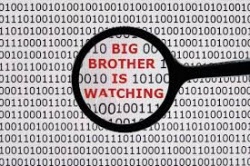Difference between revisions of "Watch list"
(prediction of threat) |
(image) |
||
| Line 1: | Line 1: | ||
{{concept | {{concept | ||
|wikipedia=http://en.wikipedia.org/wiki/No_Fly_List | |wikipedia=http://en.wikipedia.org/wiki/No_Fly_List | ||
| + | |image=watch_lists.jpg | ||
|description=Ostensibly about protecting citizens from terrorist activity, governments around the world are making increasing use of watch lists, a tactic better understood as part of a mass surveillance programme and an intensifying police state. | |description=Ostensibly about protecting citizens from terrorist activity, governments around the world are making increasing use of watch lists, a tactic better understood as part of a mass surveillance programme and an intensifying police state. | ||
}} | }} | ||
Revision as of 14:51, 27 August 2015
Since 2001 especially, the US government has been leading the world in the introduction of watch lists.
Contents
Official Narrative
The "war on terror" and increased talk of muslim terrorists is frequently invoked to justify the conditional granting of freedoms formerly taken for granted. Travelling by plane in US, for example, now requires that one be approved by checking against a "no fly list", designed to prevent acts of terrorism and make life harder for known or suspected terrorists.
Problems
In practice, many of these systems (the US no fly list, in particular) have been shown to be poorly conceived and highly wasteful. The US no fly list, for example, has flagged up very young children as suspected terrorists (sometimes even less than 12 months old!) They do nothing to prevent false flag terror, which generally circumvents standard operating procedure without difficulty, while proving inconvenient to members of the general public.
Alternative interpretation
In light of their manifest unfitness for purpose for preventing terror, alternative explanations seem called for.
Watchlists can also be understood as part of a long term mass surveillance project. The notion of "watch lists" requires that - however few or many names are on those lists - everyone be watched. Quite apart from the data collected in this way, the affect on citizens' psychology is also useful; data collection is greatly facilitated by a population habituated to disclose data without asking "why?".
Watchlists can also be understood as a preparation for a ramping up of the police state. If the citizenry allow their government to withhold access to a particular freedom (such as aeroplane travel) to a small minority (say, those with arab names), then the principle is established. Evidence or legal proceedings are not needed - formerly unconditional freedoms may be revoked at any time without warning. This principle indeed seems to have been established in USA as regards aeroplane travel. Anyone who opposes government policy, such as for example, whistleblower Jesselyn Radack is liable to be included on watchlists.
US No Fly List
On September 11, 2001, the FBI had a list of 16 people who "presented a specific known or suspected threat to aviation."[1] By November 2001, the list had grown to more than 400 names, and responsibility for keeping it was transferred to the Federal Aviation Administration. It had 71,000 names in 2006, subsequently reduced to 34,000 by attention to details such as spelling mistakes. By 2008, the ACLU estimated a TSA watch list list contained over 1,000,000 names. In 2009, the criteria for adding names to the list were relaxed, so that a single tip was sufficient. In 2015 it was revealed that no actual evidence was required for being placed on the list - merely an algorithm's "predictive assessments about potential threats".[2]
Blackmail
TSA officials have used the 'no fly list' to blackmail people, threatening to add them to the list if they were not compliant, e.g. to remove internet content or becoming an informant.[3][4]
Related Quotation
| Page | Quote | Author |
|---|---|---|
| "US/National security" | “At long last, the government has conceded that plaintiff poses no threat to air safety or national security and should never have been placed on the no-fly list. She got there by human error within the FBI. This too is conceded. This was no minor human error but an error with palpable impact, leading to the humiliation, cuffing, and incarceration of an innocent and incapacitated air traveler. That it was human error may seem hard to accept — the FBI agent filled out the nomination form in a way exactly opposite from the instructions on the form, a bureaucratic analogy to a surgeon amputating the wrong digit — human error, yes, but of considerable consequence.” | Judge Alsup |
References
- ↑ ""TSA Watch Lists, December 2002" (PDF), a PowerPoint presentation by the U.S. Department of Transportation's Transportation Security Intelligence Service. Entered into public record as Attachment A, Part 1, during Gordon v. FBI, 2003" (PDF). Retrieved 2007-12-27.Page Module:Citation/CS1/styles.css must have content model "Sanitized CSS" for TemplateStyles (current model is "Scribunto").
- ↑ http://www.theguardian.com/us-news/2015/aug/10/us-no-fly-list-predictive-assessments
- ↑ https://www.youtube.com/watch?v=gTtYXW_1-KU
- ↑ https://www.youtube.com/watch?v=pmCSygPs_SU
